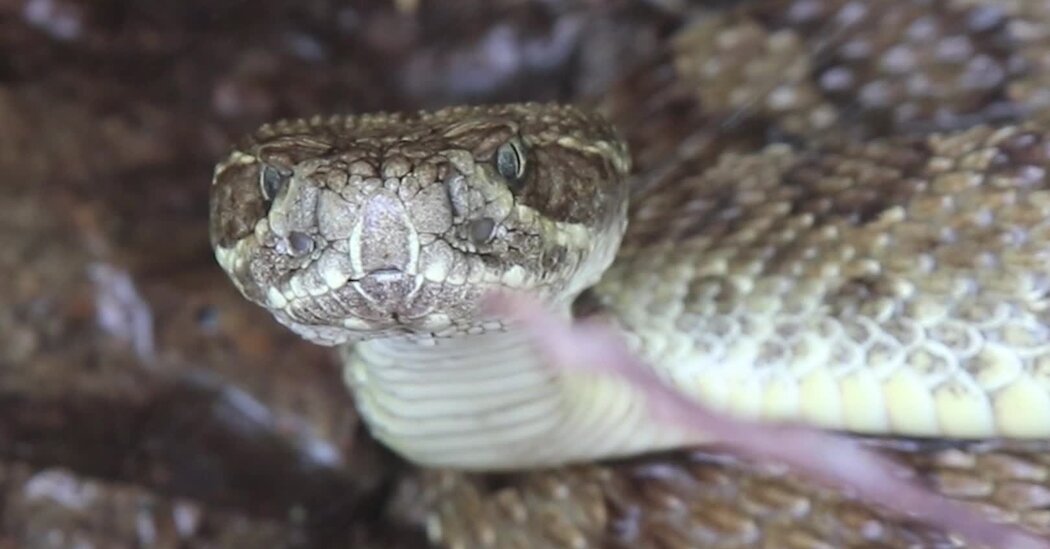A new study reveals the surprising ways rattlesnakes have evolved to collect water in the desert.
You are in a desert and dying of thirst. All of a sudden, storm clouds appear overhead, and the sky starts to spit tiny drops of liquid. How would you quickly make the most of the potentially lifesaving precipitation?
One more thing, you don’t have any hands.
Prairie rattlesnakes have evolved an easy solution to this problem. They simply coil up and turn themselves into rain-collecting pancakes.
“It is a behavior that is seen in several different species of snakes,” said Scott Boback, a herpetologist and ecologist at Dickinson College in Pennsylvania. But “most of that information has been very anecdotal.”
After all, rattlesnakes don’t like being found. And precipitation in arid environments is infrequent. If Dr. Boback and his colleagues wanted to study the rain-harvesting phenomenon, they realized they’d have to make it rain.
With garden sprinklers and video cameras at a well-known rattlesnake hibernaculum just outside Steamboat Springs, Colo., Dr. Boback and his team recorded nearly 100 snakes reacting to simulated rainfall. That allowed them to quantify the behavior and break it into stages.
Not only did they observe snakes drinking off their own flattened bodies, as well as the ground, but they also saw snakes lean over and take sips off their neighbors. They also found that snakes in large aggregations were more likely to drink off other snakes than those in small clusters were.
